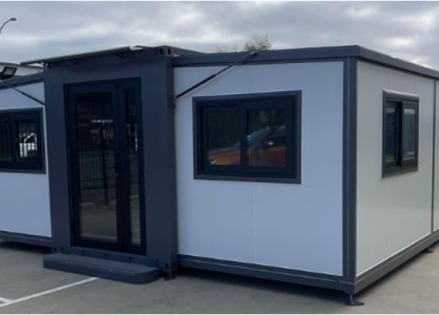Hidden Costs You Should Check Before You Buy a Container House
When individuals are planning to buy container house, they tend to see the price and believe it is less expensive compared to a normal home. It is certainly the case that container houses are cheaper and quicker to install. However, there are certain concealed expenses that numerous consumers are not aware of. These things can disrupt your planning and provide you with an unexpected bill down the line.
Why are hidden costs important when purchasing a container house?
Hidden expenses count because they influence your overall budget. If you budget for the initial cost of buying, you might incur surprise charges in the construction process. Such charges can prolong the project and even drive the price towards a regular house. When you buy container house with knowledge of such expenses, you remain ready and tension-free.
What are the primary hidden expenses of a container home?
There are a number of hidden expenses you should be aware of. Some are minor, but collectively they can amount to a significant sum. These are the principal ones:
- Land preparation –You want a solid and level foundation for the house. Removing land, grading, and putting down a foundation all come with added expense.
- Permits and approvals –Each region has building regulations. Obtaining a permit and adhering to the local codes may be an added cost to your budget.
- Insulation and climatisation – A container made of metal needs to be well insulated to stay warm during winter and cool during summer. This contributes to material and labour expenses.
- Transport and delivery – It often takes cranes and trucks to get the container onto your property and onto the ground.
- Fittings and finishes –An unfurnished container house does not include wiring, plumbing, or interior finishing. You will need to include these in your budget.
- Maintenance –Steel tanks can experience rust or deterioration over time. Repairing and coating them is a long-term expense.
How does insulation contribute to the overall cost?
Insulation is a major expense that people tend to overlook. Containers are constructed of steel, which conducts heat and cold quickly. If not properly insulated, your home will be extremely uncomfortable. Spray foam, panels, or green materials will all do the trick, but contribute to material and labour costs.
Are there legal expenses when you purchase a container house?
Yes. Approvals, permits, and legal inspections are required in most states. Councils simply desire the house to be up to safety standards. If you skip this step, you could risk fines or removal orders down the road. Legal and council fees differ geographically, so you’ll want to inquire about them prior to beginning.
What about setting up utilities?
Most customers forget to include water, electricity, and sewage hookups. If your property is far away, it can be a very expensive process to get these services on-site. Even in the city, digging and hookups are extra. Solar or off-grid options are possibilities, but these raise initial prices as well.
Are container houses still economical with surprise expenses?
Yes. Despite these expenses, they are usually less expensive than regular houses. The secret is to prepare in advance. Prepare a list of all the costs involved prior to starting. Request detailed quotes from builders and suppliers. This way, when you choose a container house, you will be aware of the actual cost and can steer clear of financial pressure.
Container houses Australia are innovative, environmentally friendly, and contemporary. But they have some concealed expenses. Land, permits, insulation, delivery and utilities add to the total cost. When you plan these ahead of time, you will find it less difficult and much better. If you are set to buy container house, research thoroughly and plan your budget carefully. For reliable solutions, you can count on Snap Solutions.
